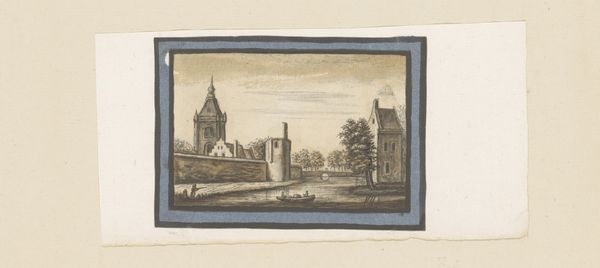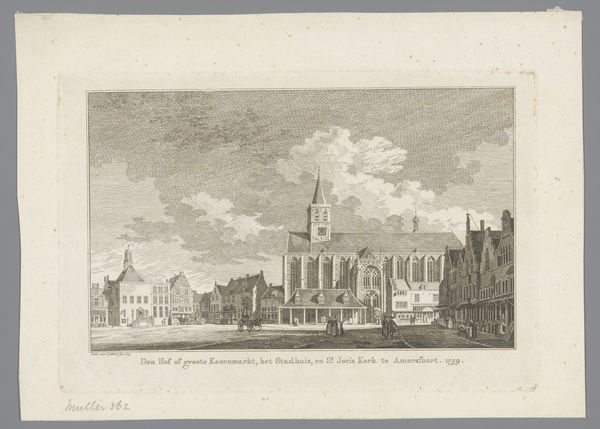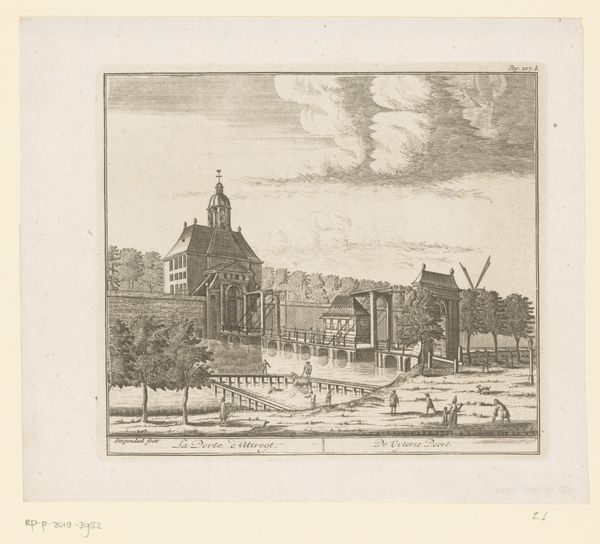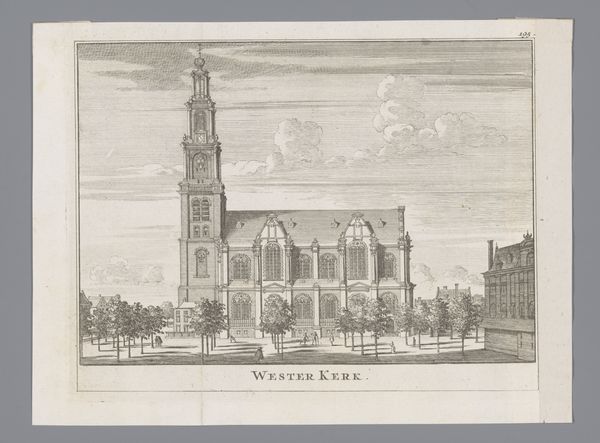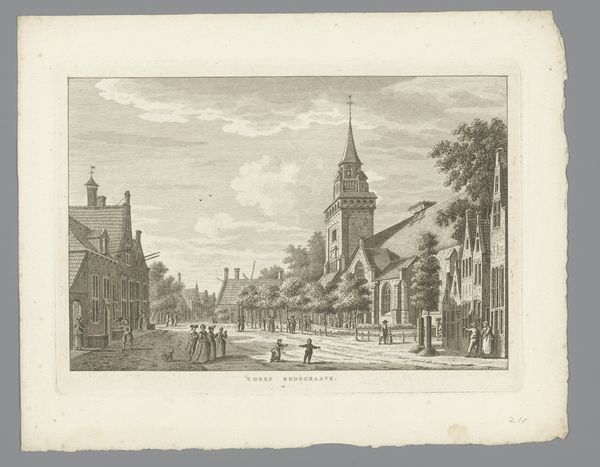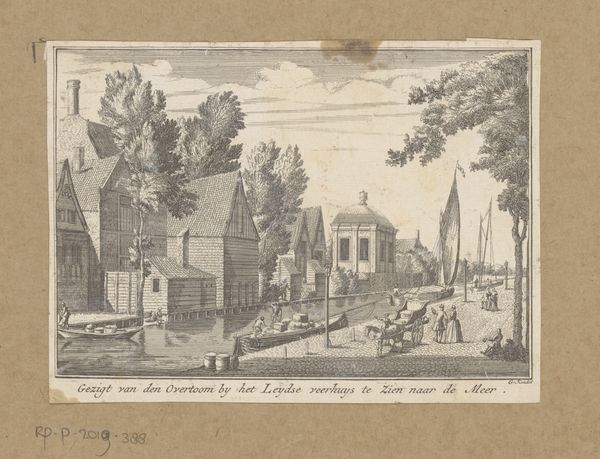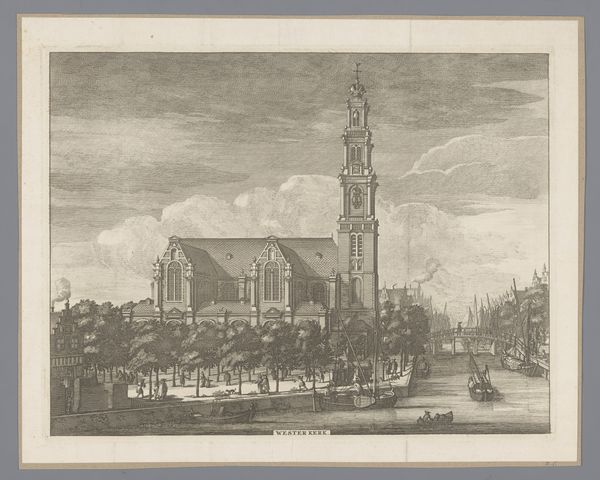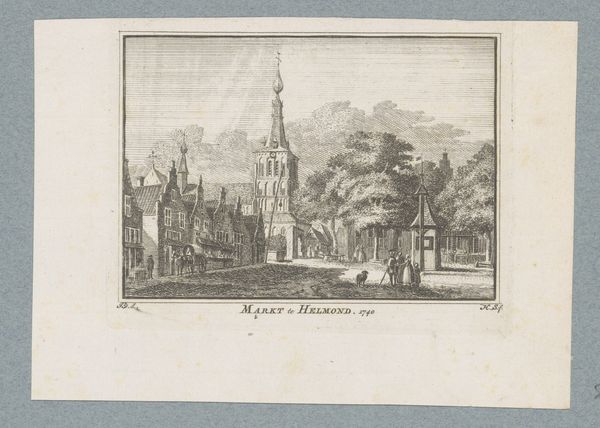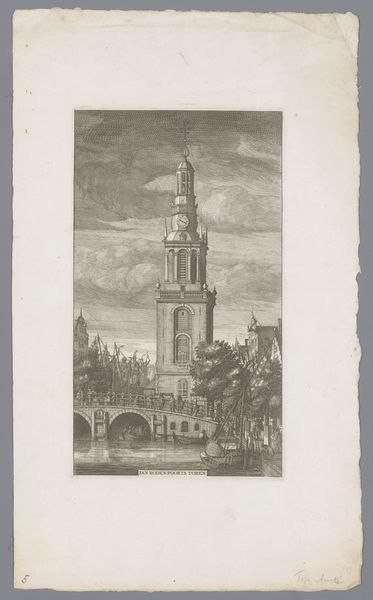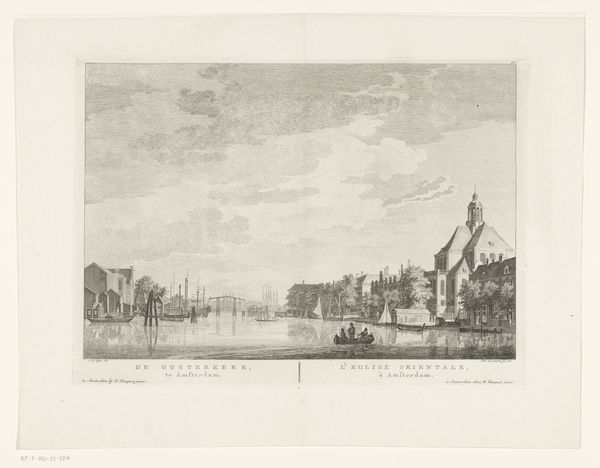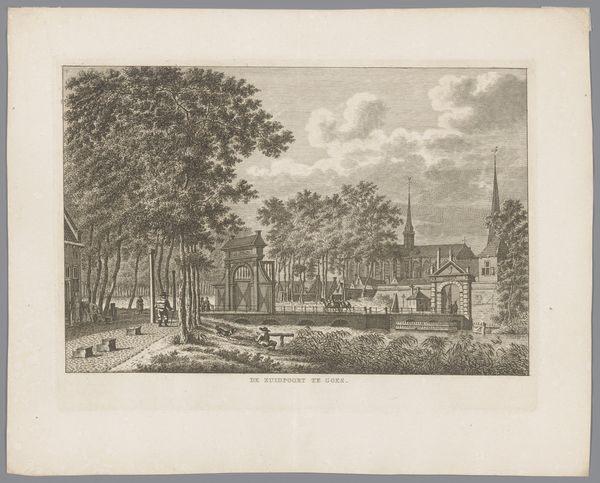
painting, watercolor
#
baroque
#
painting
#
landscape
#
watercolor
#
cityscape
#
watercolor
Dimensions: height 82 mm, width 118 mm
Copyright: Rijks Museum: Open Domain
Curator: Ah, this lovely, almost sepia-toned scene by Abraham Rademaker, made in 1725. It’s called “View of the Castle of Montfoort,” rendered with watercolor on paper. What strikes you about it? Editor: The stillness. It’s remarkably serene. It's a little world framed in sepia, like a faded memory. A grand, quiet moment captured in time. What I'd really like to know is what was this space really like at the time, and who really benefited from its perceived serenity? Curator: Rademaker was quite interested in topographical depictions. His landscapes feel meticulously observed but imbued with a certain... ideal. Perhaps he heightened certain details and softened others to enhance the picturesque qualities of the landscape. Think of the two figures to the side -- do they feel genuinely a part of that space or are they convenient additions? Editor: I'd wager that, despite the detailed rendering, what's shown is most certainly an idealized version of a world meant for the consumption of a select group, erasing all elements of potential dissonance in the construction of an aesthetic experience, like so many depictions of rural spaces. A powerful family residing in their castle while the realities of the working population remained out of frame. What do you make of this pervasive aestheticization? Curator: You’re right, there’s an intentional smoothing-over, and maybe I’m a bit too smitten with the scene. I suppose my eye is always drawn to how artists bend reality. I wonder about what details are omitted and what the process of creation actually consisted of: how long was it, and what would one be really paying attention to while painting? It becomes a meditation. A study, not just of place, but also of feeling. Editor: Absolutely. It’s not just about documenting what’s there but choosing what’s *worth* documenting. Which raises fascinating questions, of course. If Rademaker were around today, what would *he* be omitting from view? I mean, whose stories remain invisible in these picturesque scenes? Curator: That's a question worth holding onto as we walk through the exhibition. So often, these views seem straightforward, but when we scratch the surface— Editor: We reveal the power structures implicit in every depiction. Even a tranquil castle holds a complex history within its walls, both beautiful and… something else. Thank you for letting me think aloud.
Comments
No comments
Be the first to comment and join the conversation on the ultimate creative platform.
